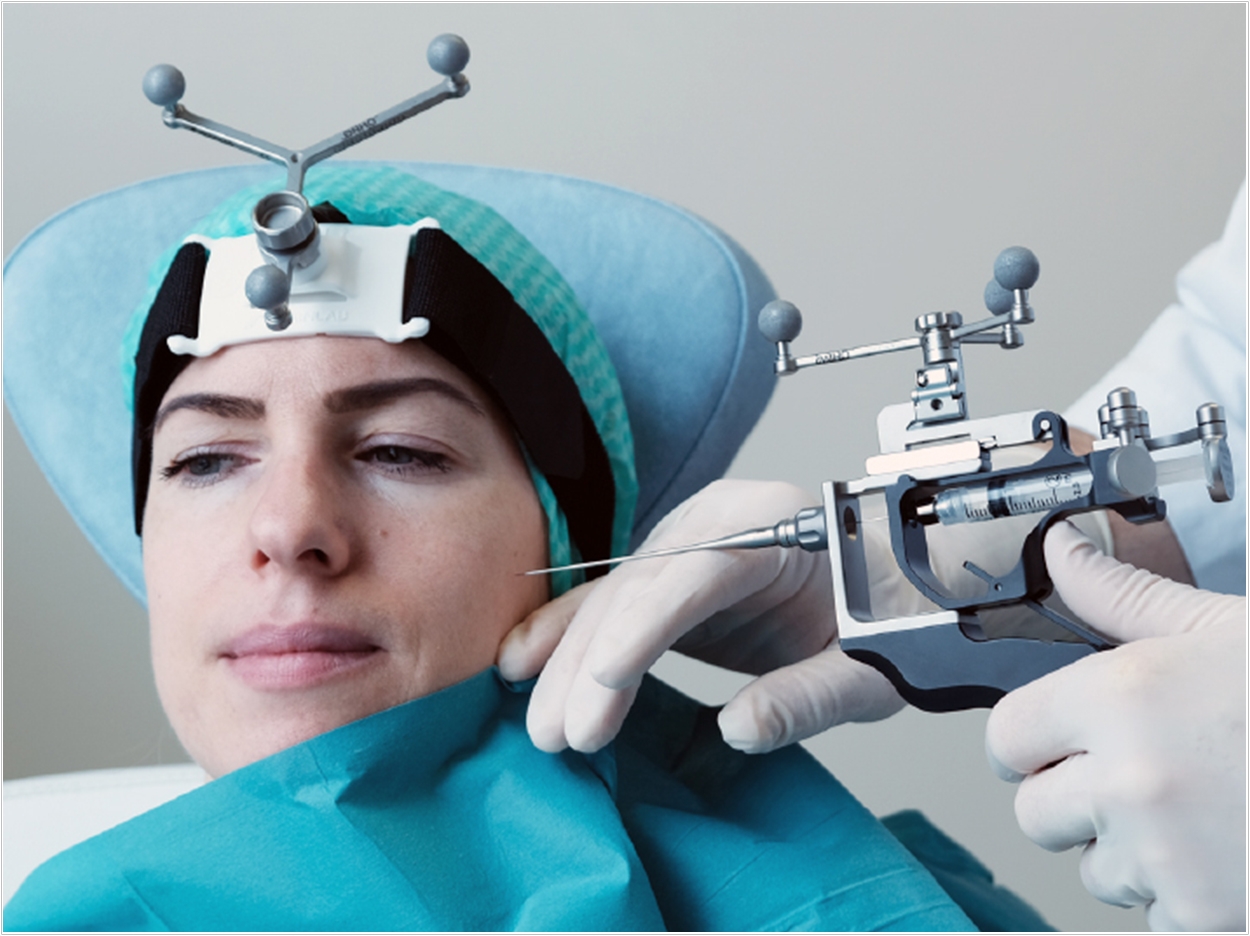
Patients with chronic facial pain often get their teeth pulled, consume a host of painkillers, and constantly go from doctor to doctor trying to find a solution and rarely finding relief. Now, PhD candidate Kent Are Jamtøy at the Norwegian University of Science and Technology (NTNU) is studying how Botox may be able to help.
In a study involving 30 patients, Jamtøy is using a high-precision Multiguide surgical instrument to inject Botox and temporarily paralyze the sphenopalatine ganglion nerve deep in the face, behind the sinuses and near the brain.
“We believe that for some reason, the ganglion has run riot and sends signals to the brain that are interpreted as pain. By using Botox to turn off the pain signals for a spell, we want to get the brain out of alarm mode,” said Jamtøy.
Furthermore, “once the alarm has been turned off, we think the brain will handle the nerve signals normally as they return and the Botox wears off. The hypothesis is that sensitivity decreases and the patient’s quality of life improves dramatically.”
The Multiguide instrument used to navigate the body and inject the Botox was developed at NTNU, with numerous safety studies carried out at St. Olav’s Hospital. According to NTNU, these studies have shown very promising results when injecting Botox into the sphenopalatine ganglion nerve for severe headaches, cluster headaches, and migraines.
About 200 patients in Norway have persistent idiopathic facial pain, a chronic disorder. The disease is so rare and the symptoms so diffuse that it almost always takes a long time for the patient to obtain the right diagnosis, NTNU says. In practice, it is usually only determined after all other diagnoses are eliminated.
“A typical patient has already seen the dentist, a physiotherapist, an ear-nose-throat specialist, a neurologist, a neurosurgeon, a face and jaw surgeon, and taken epilepsy medications and antidepressants. CT or MRI images fail to detect any cause. In desperation, the patient seeks out some alternative treatment, often abroad,” said Jamtøy.
As an orthopedic surgeon, Jamtøy has welcomed patients who have had several teeth extracted to relieve pain without the pain diminishing afterward. It’s difficult for patients to discern where the pain is coming from, and it’s often confused with a toothache.
Severe facial pain often is incapacitating, and the patient’s quality of life is significantly reduced. Patients may have problems with daily activities. Many have to quit their jobs. However, many patients are labelled “health shoppers” and problem patients, Jamtøy said.
The disorder often is confused with trigeminal neuralgia, another type of pain in the main sensory nerve of the face. This is a stabbing pain, like electric shocks that come and go. Persistent idiopathic facial pain is not quite as intense. It manifests predominantly on one side of the face, is chronic, and has no demonstrable cause.
Some patients are treated abroad with major surgery that involves inserting an implant with a stimulator into the sphenopalatine ganglion nerve.
“The operation causes all the impulses from the nerve to the brain to be blocked with the stimulator is activated. This causes some unfortunate side effects that affect tear production and the mucous membranes of the nose and mouth. Botox has a far more targeted effect that blocks the signals we’re looking for, and it also wears off after a while,” said Jamtøy.
Jamtøy’s research is a randomized, double-blind, placebo-controlled, crossover pilot study. Neither the patient nor the therapist knows whether Botox or saline solution is being injected. The effects are recorded for five months after the first injection and before a second round, in which patients receive the opposite of what they received in the first round. The second round is followed by three months of recording the effects. Patients who experience a positive effect from the treatment are guaranteed further treatment.
The study, “Botox Blockage of Deep Ganglion Nerve in Patients With Persistent Idiopathic Facial Pain,” was published by St. Olav’s Hospital.
Related Articles
The 90-Day Window: Trigeminal Nerve Injuries and the Importance of Prompt Referral
Treatment Addresses Trigeminal Neuralgia Without Side Effects
Case Report: An Implant Resolution to Idiopathic Pain












